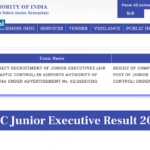The Indian Ocean region is witnessing a renewed maritime surge — not just in terms of naval strength, but also in shipbuilding capabilities and regional collaboration. Among the key players steering this growth are Mazagon Dock Shipbuilders Limited (MDL) from India and Colombo Dockyard PLC (CDPLC) from Sri Lanka. Both companies, with rich legacies and robust capabilities, have emerged as strategic partners in the quest for greater self-reliance, maritime security, and commercial expansion in South Asia.
This blog explores the evolution, capabilities, and cooperation between Mazagon Dock and Colombo Dockyard, as well as their significance in the broader context of regional maritime dynamics.
Introduction to Mazagon Dock Shipbuilders Limited (MDL)
Mazagon Dock Shipbuilders Limited, often referred to as “Ship Builder to the Nation,” is India’s premier defense shipyard. Based in Mumbai and operating under the administrative control of the Ministry of Defence, MDL is known for constructing warships, submarines, and commercial vessels.
Key Highlights:
- Founded in 1774, nationalized in 1960
- Specializes in building Destroyers, Frigates, Corvettes, and Scorpène-class submarines
- Played a vital role in India’s Make in India defense initiative
- Delivered advanced vessels to the Indian Navy such as the P-15B Destroyers and P-17A Stealth Frigates
MDL’s focus is not just on production, but also on indigenous innovation, system integration, and global partnerships.
Introduction to Colombo Dockyard PLC (CDPLC)
Colombo Dockyard PLC is Sri Lanka’s leading shipbuilding and repair company. Established in 1974 and located in Colombo Port, CDPLC is partially owned by Japan’s Onomichi Dockyard Co. Ltd. and the Sri Lankan government.
Key Highlights:
- Over 4 decades of experience in ship repair and shipbuilding
- Builds vessels such as offshore patrol vessels (OPVs), tugs, tankers, and passenger crafts
- Services both commercial and naval ships from South Asia, Africa, and the Middle East
- Known for cost-effective and efficient repair operations
CDPLC plays a crucial role in maintaining Sri Lanka’s maritime infrastructure while serving as a regional hub for maritime services.
Strategic Relationship Between MDL and CDPLC
In 2023–2024, the two shipyards began exploring avenues for bilateral collaboration, particularly in the defense and commercial vessel space. This cooperation reflects a larger regional trend where South Asian nations are working together to strengthen maritime capabilities while reducing reliance on global powers.
Objectives of the Collaboration:
- Technology Sharing: MDL brings advanced warship-building capabilities; CDPLC provides regional access and cost-effective infrastructure.
- Joint Ventures: Scope for co-production of OPVs and auxiliary vessels.
- Export Promotion: Combine resources to serve clients in Africa, Southeast Asia, and the Middle East.
- Capacity Building: Skill development, training programs, and industrial upskilling in both countries.
This collaboration aligns with India’s Neighbourhood First and Security and Growth for All in the Region (SAGAR) policy.
Significance for India-Sri Lanka Relations
India and Sri Lanka share centuries-old maritime, cultural, and economic ties. The cooperation between Mazagon Dock and Colombo Dockyard is another example of how economic and strategic interests can converge to benefit both countries.
Key Advantages:
- Strengthening Maritime Security: By working together, both countries can better patrol their Exclusive Economic Zones (EEZs) and combat piracy, smuggling, and illegal fishing.
- Boosting Blue Economy: Joint shipbuilding contributes to employment, trade, and infrastructure development.
- Reducing Chinese Influence: The partnership serves as a soft counter to China’s increasing role in Sri Lanka’s maritime affairs, particularly with projects like the Hambantota Port.
Regional Maritime Context
The Indian Ocean is one of the world’s most critical sea routes. Over 80% of global maritime oil trade passes through this region. With rising geopolitical tension, regional players like India and Sri Lanka must ensure autonomy in securing their waters.
MDL and CDPLC’s partnership is an answer to:
- China’s naval expansion through the String of Pearls strategy
- The need for self-reliant defense manufacturing in South Asia
- Enhancing regional disaster response and humanitarian operations through capable naval assets
Collaborative Projects: Current and Future
1. Offshore Patrol Vessels (OPVs)
Colombo Dockyard has already built OPVs for the Sri Lankan Navy. With MDL’s support, these could be upgraded with better radar, propulsion, and armament systems, making them export-ready for other small navies.
2. Submarine Refitting and Maintenance
MDL’s experience in submarine construction (e.g., Scorpène-class) could help CDPLC develop future capabilities in submarine repair and retrofitting.
3. Joint Design and R&D
Sharing technical knowledge for designing high-speed crafts, hovercrafts, and unmanned maritime vehicles (UMVs).
4. Commercial Shipbuilding
Tanker construction, ferry services, and offshore supply vessels could become a core joint export segment.
Economic Impact and Employment
The maritime collaboration between the two yards is expected to:
- Create hundreds of skilled jobs in both India and Sri Lanka
- Strengthen supply chains for marine components and electronics
- Attract foreign clients looking for cost-effective but quality shipbuilding options
- Stimulate marine engineering education and training institutes
Challenges to Overcome
Despite the positive outlook, some barriers remain:
- Regulatory Differences: Defense exports are heavily regulated in India.
- Geopolitical Pressures: China may attempt to sway Sri Lankan policy through financial and political means.
- Logistics and Infrastructure: Need for modernization of certain facilities in Colombo to match MDL’s standards.
- Language and Workforce Integration: Cultural and operational alignment will be necessary.
However, these are addressable through policy coordination, diplomatic engagement, and sustained institutional support.
India’s Maritime Diplomacy and the Role of MDL
Mazagon Dock is increasingly playing a role beyond national borders — contributing to India’s image as a security provider in the Indian Ocean. The cooperation with CDPLC fits perfectly within India’s broader vision of:
- Exporting defense equipment to friendly nations
- Enhancing maritime surveillance in the Indo-Pacific
- Offering alternatives to nations dependent on Chinese military hardware
It’s no longer just about warship production — it’s about maritime diplomacy.
Environmental and Sustainability Goals
Both shipyards are also expected to align their future operations with green shipping initiatives, such as:
- Use of LNG and hybrid propulsion systems
- Sustainable ship recycling practices
- Low-emission design standards for commercial ships
With the International Maritime Organization (IMO) pushing for cleaner shipping, such eco-friendly technologies will open up new markets.
Conclusion: A Partnership Sailing Forward
The collaboration between Mazagon Dock Shipbuilders and Colombo Dockyard represents more than just an industrial tie-up — it is a symbol of regional cooperation, maritime self-reliance, and strategic alignment. As both countries look to the seas not just for defense but also for economic growth, this partnership is poised to reshape South Asia’s shipbuilding narrative.
With visionary leadership, transparent execution, and mutual trust, MDL and CDPLC can together offer a competitive, sustainable, and sovereign maritime future — not just for India and Sri Lanka, but for the entire Indo-Pacific region.










